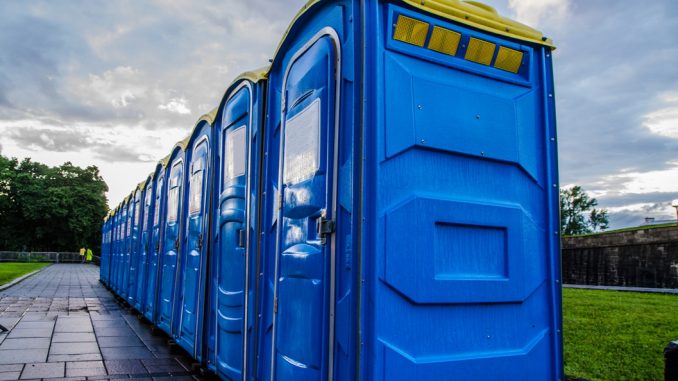
How were the pyramids built? Who was Jack the Ripper? What happened to Agatha Christie when she went missing for 10 days in 1926? How does a portable toilet work?
All mysteries and questions humanity has asked itself through the ages. Thankfully, the team at PipeRepair.co.uk have the answers to one of those. And no, it is not Jack the Ripper, although there is an interesting theory…
What is a portable toilet?
Before we answer the big question, it is perhaps helpful to understand what exactly a portable toilet is.
A toilet which is portable would be the smart/sarcastic answer. The reason it is portable is that it does not connect to mains water or a sewer.
With no pipework required, a portable toilet can be installed anywhere. It is why they are found at music festivals, camping venues, construction sites and large outdoor gatherings where there are no permanent facilities plumbed into a wastewater network.
The portable toilet enables people to relief themselves anywhere at any time in privacy and relative comfort. No wonder it is considered one of the greatest inventions ever.
The components of a portable toilet
A portable toilet is made up of four main components. The first is the toilet seat. You know, that thing you sit on.
The flushing mechanism takes wastewater away from the bowl. It either uses water from a hidden tank inside the unit or chemicals from the holding tank.
This water or chemicals are transported into the toilet bowl by a pressure system. The pressure system is operated by either the hand pump or foot pedal used for flushing.
When the toilet is flushed, the pressure system sends the contents of the bowl including waste, toilet paper, water and/or chemicals into the holding tank.
The holding tank is where everything is stored. Located beneath the seat, it is the most important component of a portable toilet.
How do portable toilets work?
And the reason why holding tanks are the most important component is because they are responsible for dealing with the waste.
Chemicals are mixed with waste and liquids inside the holding tank, making sure everything is broken down effectively.
These chemicals are harmless to people but every effective in dealing with all types of waste bacteria, providing a safe and hygienic environment.
Biocides are used to prevent bacteria growing. They reduce bad odours and are vital in allowing many different people to use the toilet before it requires cleaning.
Fragrances ensure there is a pleasant smell despite the containment of waste within the unit. Detergents help all the chemicals involved in the process work effectively.
Finally, there is a dye used within the toilet itself. Normally blue-coloured, its purpose is two-fold. First, it masks the pretty vulgar colour of waste.
Second and most important, the dye will change colour when the holding tank has reached its limit and needs to be emptied.
What happens to the waste from a portable toilet?
The waste is treated within the holding tank itself. Once the tank becomes full, it is emptied by a specialist company who will take the contents away to a wastewater treatment site.
And that is in effect the one major difference between a portable toilet and a permanent, plumbed in fitting. Rather than being carried to a treatment plant through pipes and sewers, it is instead transported on a tanker.
Other types of portable toilets
Portable toilets are no longer restricted to just single units. The industry is now worth as much as $16.79 billion globally, with many different facilities now available.
Luxury portable toilet trailers are mobile restrooms which include flushing toilets, urinals, sinks with running water, mirrors and lighting.
They offer a much more comfortable experience than standard portable toilets, containing vast holding tanks beneath the floor of the facility capable of holding up to 3000 litres of wastewater.
With such vast quantities of wastewater involved, luxury portable toilet trailer repair and maintenance is becoming rather a big industry in itself.
Technological advances mean some companies now offer vacuum toilet pods containing no chemicals. They work similarly to the toilet on an aeroplane, using just 0.5 litres of recycled water per flush. This makes the vacuum toilet significantly better for the environment.
Looking beyond portable toilets and portable shower units are, unsurprisingly, units which contain showers rather than toilets.
With the increasing popularity of glamping and other more luxurious outdoor accommodation, there is now huge demand for portable shower units.

Leave a Reply